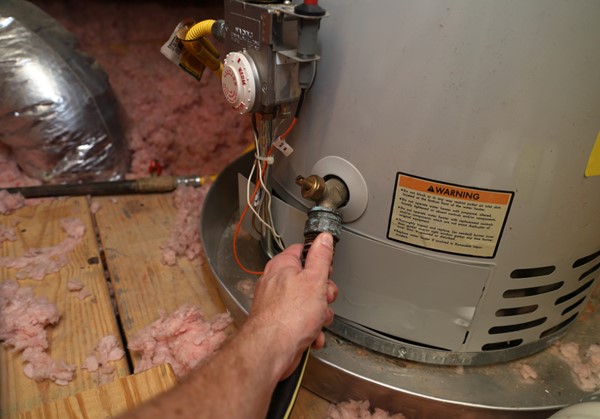Those Forgotten Maintenance Projects - Water Heater Sediment
by Rhonda Hascall 09/22/2019

If you use a teapot, you know that over time, as the water heats and cools, calcium and other deposits from the water build up on the bottom of the kettle and need cleaning out periodically. The same is true of your water heater. Both city water and well water can contain suspended minerals and chemicals like calcium and magnesium. Unless you filter the water through reverse osmosis before it reaches your hot water tank, those chemicals build up inside and leave a heavy crust at the bottom. Even a small amount of sediment reduces your water heater’s effectiveness and ability to keep a stable temperature in your tank.
To ensure that your water heater gives you lovely warm temperatures for years to come, clean out the sediment at least once each year, and more often if your water has heavy hard-water sediment.
How to drain and clean your water tank
- Turn off the power supply. If your appliance is electric, just turn off the electricity, but if your appliance is gas, you’ll need to turn off both electricity and gas.
- Turn off the cold water supply from before where it enters the water tank. If your inlet has a valve, turn it off there, but, in many cases, this means turning it off at the street.
- Turn on the hot water tap in the nearest sink or tub. This gives a second access point allowing air to flow into the tank as you drain it.
- Attach a garden hose firmly to the drain spigot and run the end into a bucket or tub if the appliance is in the basement or cellar, or outside into the garden if on the main floor. If your water heater is in the attic, you can run the hose out onto the roof to drain into the gutters provided they don’t have screens on them.
- Remember that you may have to empty a 5-gallon bucket several times.
- Carefully turn on the spigot and check your attachment for leaks.
- Once all the water is drained, open and close the cold-water valve several times to force fresh water through the bottom of the tank to clean out the last of the sediment. Take care as you reopen the valve because the water will run out quickly and surprise you.
- Finally, when the water runs clear, close the cold-water inlet and the water heater’s drain valve and remove the hose.
- Open the cold-water valve and allow the tank to fill. Open the hot-water faucets on all sinks and tubs to remove air from the lines.
- When the faucets stop sputtering air, close them all and restore power. NOTE: do not restore power until the tank is full. Follow your manufacturer’s instructions to light the pilot. If you’re not sure how to light it, contact your gas company for assistance.
Keeping your water heater in tip-top shape ensure its longevity and reduces maintenance costs. If you’re uncertain about completing this task yourself, ask your real estate professional to refer you to plumbing professionals.

